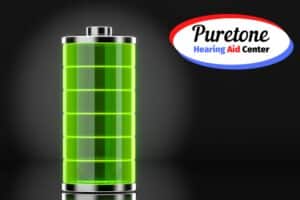When it comes to hearing loss, finding the right solution can make a world of difference in improving the quality of life. Thankfully, the evolution of hearing aids has brought us incredible advancements in technology, making it easier than ever to navigate the world of sound. Let’s take a journey through the history of hearing aids, from the early days of ear trumpets to the cutting-edge digital devices we have today.
Ear Trumpets: The Early Days of Hearing Assistance
Before the era of electronic hearing aids, people relied on ear trumpets to amplify sound. These cone-shaped devices were designed to direct sound waves into the ear canal. In the 17th to 19th centuries, ear trumpets were quite popular, providing a basic form of hearing assistance. However, they had their limitations. Ear trumpets were large and cumbersome, making them inconvenient to carry around. Additionally, their amplification capabilities were limited, and they often caused discomfort.
The Era of Analog Hearing Aids
In the early 20th century, the introduction of carbon hearing aids marked a significant advancement in hearing aid technology. These devices utilized carbon microphones to amplify sound. As technology progressed, vacuum tube hearing aids were developed, offering even greater amplification. Analog hearing aids became smaller and more portable, providing better sound quality and comfort for individuals with hearing loss. However, they still had limitations, such as difficulty in adjusting volume levels and distinguishing between different sounds.
The Digital Revolution: The Rise of Modern Hearing Aids
The late 20th century brought forth a revolutionary change in hearing aid technology with the introduction of digital signal processing. Digital hearing aids transformed the way individuals with hearing loss experienced sound. They offered superior sound quality, clearer speech recognition, and enhanced customization options. With digital technology, hearing aids could distinguish between various sound frequencies, allowing for improved speech understanding even in noisy environments. These digital devices also presented more style options, ranging from behind-the-ear (BTE) to in-the-ear (ITE) styles.
Cutting-Edge Technology in Hearing Aids
Today, hearing aids continue to evolve, incorporating the latest advancements in technology. Artificial intelligence (AI) and machine learning have made their way into hearing aids, enabling them to adapt and personalize settings based on an individual’s unique needs and preferences. AI-powered hearing aids can analyze surrounding sounds and automatically adjust settings to optimize speech understanding.
Smart features are another remarkable development in modern hearing aids. Automatic adjustments allow hearing aids to adapt to different listening environments, seamlessly transitioning between quiet conversations and bustling gatherings. Noise cancellation technology helps filter out unwanted background noise, ensuring a more focused listening experience. Directional microphones improve speech understanding by amplifying sounds coming from the front while reducing sounds from other directions.
Telehealth and remote programming capabilities have also become prominent features in hearing aids. With these functionalities, individuals can receive remote adjustments and programming sessions, eliminating the need for frequent in-person visits to the hearing care professional. This convenience is especially valuable for those who have difficulty traveling or live in remote areas.
The transformative journey of hearing aids from the era of ear trumpets to today’s cutting-edge digital devices has revolutionized the way we perceive sound. Functionality, comfort, and aesthetics have significantly improved, making hearing aids more accessible and user-friendly than ever before.
If you’re experiencing hearing loss, it’s worth exploring the latest hearing aid options available at Puretone Hearing Aid Center. Their team of experienced professionals can guide you in finding the perfect solution tailored to your specific needs. Don’t let hearing loss hold you back from fully embracing the sounds of life. Embrace the technology that can transform your hearing experience and enhance your overall quality of life.



